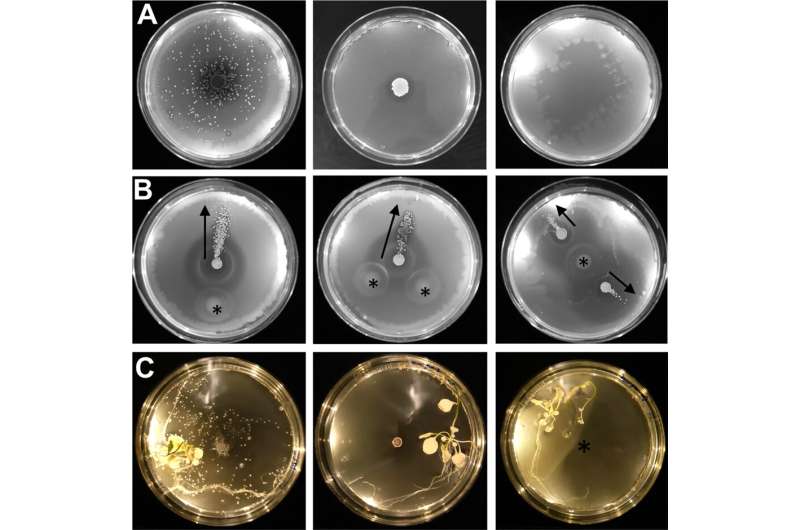Researchers discover hitchhiking bacteria

Imagine that you need to travel, but you don't have a car and you're dead broke. What do you do? Hitchhiking, of course! Leiden biologist found that certain bacteria use this very same tactic: their spores hop on motile bacteria and use them as a taxi, ensuring they reach the right environment to flourish.
Like so many other discoveries, it all started during Friday afternoon drinks. "My group leader Ariana Briegel and I were drinking margaritas at this restaurant Tabu in Leiden, something we regularly did before the lockdown," says first author Alise Muok from the Institute of Biology Leiden (IBL). "Then suddenly, we had an epiphany."
Discussion
Muok continues: "We were reliving a discussion we had in the lab about Streptomyces, a group of bacteria that cannot move. Lots of people from our lab study them, but I usually study motile bacteria, so we got into a discussion about which of the two is better. During that discussion, IBL Director Gilles van Wezel argued that you don't need motility, because immotile bacteria make use of wind and insects to transport themselves. So while Ariana and I were having drinks, suddenly a thought hit us: why wouldn't they also use motile bacteria for traveling on micro-scale?"
The duo teamed up with Dennis Claessen, got into the lab and found exactly what they were looking for.
Mysterious layer
The team studied Streptomyces, an immotile group of bacteria mainly found in soil at plant roots. Their presence helps plants because they repel harmful bacteria by producing antibiotics. "In fact, the majority of the antibiotics we currently use comes from these bacteria!", says Muok.
The spores (see text frame) of Streptomyces have a really thick protein coat that protects them. "But the function of the outermost layer, called the rodlet layer, remained unknown. However, we discovered that this rodlet layer is vital for hitchhiking: it binds to the protrusions that motile bacteria use to move, also known as flagella." The researchers found that if spores from the Streptomyces family have this rodlet layer, they get transported in this way.
The amazing @LizahvdAart made an Animation for our new paper! Do you want sciart for your own work? Give Lizah a call!! pic.twitter.com/KQMDAmYcwX
— Ariane Briegel (@BriegelAriane) March 16, 2021
Microbial transport
"In a sense, we revealed the final step in the transportation system of immotile bacteria," Muok says. "They use the wind to travel long distances, sometimes even between countries. You can compare this with airplanes. Then, insects transport them within their local region, just like a train. And at very specific short distances, at a micro-scale, they use bacteria. Those are their taxis."
Bacterial spores
Spores are the resting state of a bacterium, often produced by bacteria when there is a lack of nutrients. When conditions are more favorable, the spores can transform back into full-grown bacteria. Spores have a thick, protective coat. They can survive without food, and are able to withstand ultraviolet radiation, extreme temperatures and most chemical disinfectants. In a Science paper from 1995, researchers describe how they revived bacterial spores from extinct bees in 25-million-year-old Dominican amber.
Improving agriculture
Since Streptomyces have a symbiotic relationship with plants and protect them from pathogens, the research findings might be interesting for agriculture. "Using motile bacteria to hitchhike to plant roots may play a crucial role in facilitating the interaction with plants. I can't tell too much about it, as we're currently investigating this. Hopefully, we've got some results we can communicate about soon!"
More information: Alise R. Muok et al. Microbial hitchhiking: how Streptomyces spores are transported by motile soil bacteria, The ISME Journal (2021). DOI: 10.1038/s41396-021-00952-8
Journal information: ISME Journal
Provided by Leiden University





















